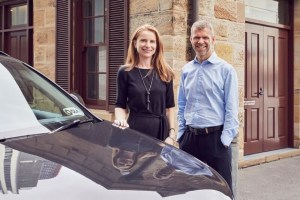
Since its Australian launch in March, Indian ride-sharing company Ola has expanded into seven major cities, signed up 50,000 drivers, recruited former eBay managing director Simon Smith, hired Starcom and The Royals and launched a new marketing campaign led by ex-P&G marketer Natasha Daly.
It’s made a big splash in the Australian market following success in India and is now outlining bigger plans to shake-up the growing ride sharing category, including working with the government to service areas that have poor public transport options.
Through its most recent marketing campaign it is challenging Uber, which has 80,000 Australian drivers, for its number one position in the market and is also competing with the likes of Taxify and Didi, which have also recently launched Down Under.
Its new campaign, developed by The Royals, is the first for Ola in the region and positions the Uber rival as the “fair” ride-sharing service.
“We’ve come into a market which is currently defined by the brand of our competitor, so we have to establish ourselves as a valuable alternative to that, which is an ongoing challenge,” Smith told AdNews.
“I push back on the notion that this market is particularly competitive because if you look at the rates charged by the competition, they are by many means extraordinarily high. We’re able to offer drivers a better deal and still build a competitive business.”
While most read the positioning as a cheeky swipe at Uber, which has come under scrutiny for the remuneration it offers its drivers, marketer Daly told AdNews it wasn’t the intention of the campaign.
Instead, the bright-green campaign, which features a diverse range of passengers and drivers, aims to highlight Ola’s community focus and “warm up the category”.
“In our consumer research, the strong insight that emerged was that people are looking for more than a transactional relationship and they want to understand where the money goes and how much drivers are being paid,” Daly said.
Daly appointed The Royals without a pitch to work on the campaign. Ola has a global relationship with Starcom who now works locally as the brand’s media agency.
The campaign is currently being amplified across digital channels, including YouTube prerolls, radio through a partnership with KiisFM and outdoor around airports. Ola opted not to use TV for its first campaign but Daly said she wouldn’t rule it out in the future.
“The key objective for us, as a new company, is reach and we felt those channels were the best way to do that quickly,” she said, adding Ola is focused on upping awareness and driving trials of the app.
The campaign has also had to overcome a certain amount of negativity currently associated with the category following various reports, including one in March revealing Uber X drivers are working for half the minimum wage.
Smith, who has held roles at eBay, Lion Nathan and Sportsbet, said it was Ola’s business model that attracted him to join in June. Ola takes an "introductory" 7.5% commission of each ride, which will increase to 15% at an undisclosed date, whilst Taxify takes 15%. Uber takes between 25% and 27.5%.
“I spent along time at eBay, which was one of the first marketplace businesses and I believe Ola is a development of that idea,” he said.
“I was really attracted to the integrity of Ola and the huge success they’ve had in an emerging market [India], their motivation for moving overseas, but most importantly that they’re focusing on providing a fair experience for both customers and drivers.”
Smith said Ola is willing to sacrifice “a large percentage of margin” to provide drivers with a better proposition.
Ola was founded in India in 2011 and has more than one million drivers globally. Smith said he is focused on working out the idiosyncrasies of the Australian market and also on its New Zealand expansion having just launched in Auckland, Christchurch and Wellington.
The company is also working closely with the Australian government to improve transport in areas that have poor public transport.
Smith said governments in every major state have been welcoming to Ola and open to the company integrating with public transport timetables in areas with infrequent buses and trains.
“We don’t only want to build a ride share business, but we also want to work with public transport infrastructure, governments and regulators to compliment the current transportation options that are already here," he said.
Australia is just one battleground in the global war for market share being fought by Uber, Didi and other competitors. While Uber may be considered the leader, it is a contested position. It has been beaten in some European countries, is in competition with Ola in India, and was bought out in China by Didi, which just launched in Australia.
Didi is yet to launch its first marketing campaign, but one is in the works with the brand recently appointing Saatchi & Saatchi and media agency Zenith. Uber last week launched a campaign promoting its short wait times and 13Cabs has been fighting back with a big TV and outdoor buy across major cities.
Which ride-sharing campaign approach do you prefer? Comment below.
Have something to say on this? Share your views in the comments section below. Or if you have a news story or tip-off, drop us a line at adnews@yaffa.com.au
Sign up to the AdNews newsletter, like us on Facebook or follow us on Twitter for breaking stories and campaigns throughout the day.


